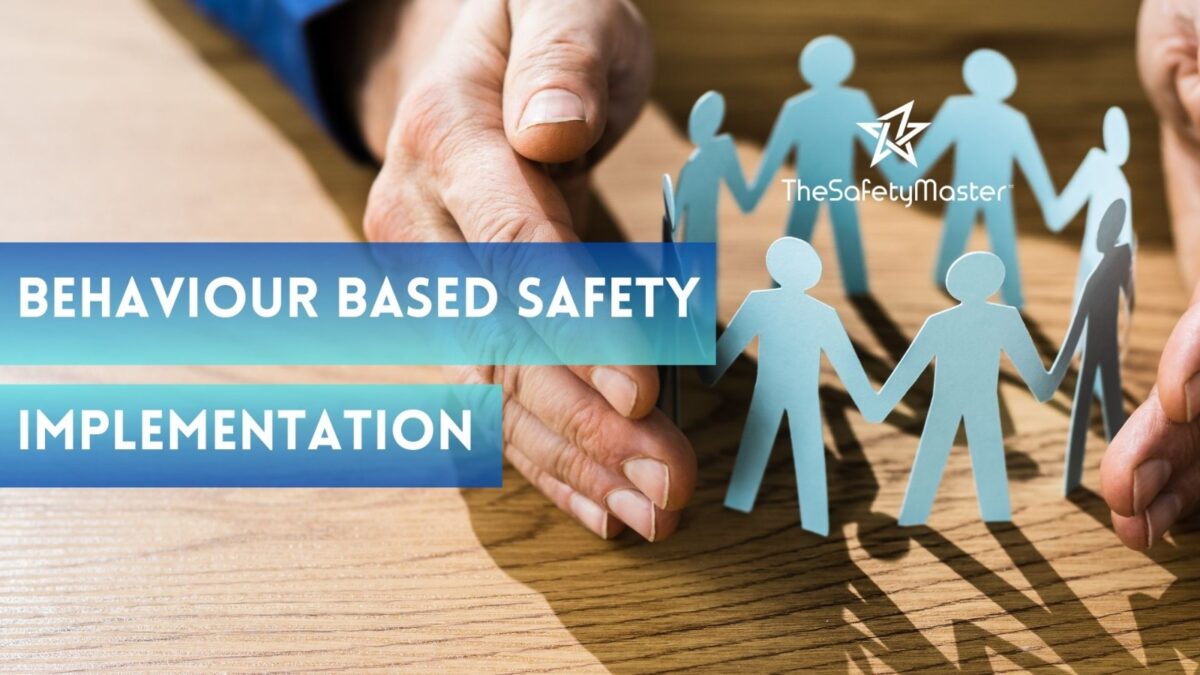Behavior Based Safety Implementation Handholding – The Safety Master

Fire Audit and Fire Load Calculation Services
May 17, 2024
Hazard Identification Risk Assessment Study report
May 20, 20241. Introduction
1.1 What is Behavior-Based Safety (BBS)?
Behavior-Based Safety (BBS) is a proactive approach to workplace safety that focuses on analyzing and modifying employee behavior to prevent accidents and injuries. Unlike traditional safety programs that primarily address physical hazards, BBS recognizes the importance of human behavior in ensuring a safe work environment.
2. Understanding Behavior-Based Safety
2.1 The Theory Behind BBS
BBS is grounded in the belief that most workplace accidents are caused by unsafe behaviors rather than uncontrollable factors. By identifying these behaviors and implementing strategies to encourage safe practices, organizations can significantly reduce the risk of incidents.
2.2 Benefits of Implementing BBS
Implementing BBS can lead to numerous benefits, including reduced injury rates, improved employee morale, and increased productivity. By fostering a culture of safety and accountability, organizations can create a workplace where safety is everyone’s responsibility.
3. The Role of Handholding in BBS Implementation
3.1 Definition of Handholding
Handholding refers to the process of providing guidance and support to individuals or groups as they adopt new behaviors or practices. In the context of BBS implementation, handholding involves offering personalized assistance to employees as they transition to safer work habits.
3.2 Importance of Handholding in BBS
Handholding plays a crucial role in BBS implementation by ensuring that employees receive the necessary support to understand and embrace safety protocols. By offering individualized guidance, organizations can address any concerns or challenges that may arise during the implementation process.
4. The Safety Master Approach
4.1 Who is The Safety Master?
The Safety Master is a leading expert in workplace safety who specializes in BBS implementation. With years of experience and a proven track record of success, The Safety Master is dedicated to helping organizations achieve their safety goals.
4.2 Core Principles of The Safety Master Approach
The Safety Master approach is built on the principles of collaboration, customization, and continuous improvement. By working closely with organizations to understand their unique needs and challenges, The Safety Master develops tailored solutions that drive sustainable safety improvements.
5. Steps of Handholding in BBS Implementation
5.1 Initial Assessment and Planning
The first step in BBS implementation is conducting a thorough assessment of the organization’s current safety practices and culture. Based on this assessment, The Safety Master develops a customized plan that outlines specific goals and strategies for improvement.
5.2 Employee Training and Engagement
Once the plan is in place, The Safety Master works with employees at all levels to provide comprehensive training on BBS principles and practices. This training emphasizes the importance of individual accountability and encourages active participation in safety initiatives.
5.3 Implementation and Monitoring
With training complete, The Safety Master guides the organization through the implementation of BBS protocols, ensuring that all employees understand their roles and responsibilities. Throughout the process, progress is regularly monitored and adjustments are made as needed to ensure success.
6. Case Studies of Successful BBS Implementation
6.1 Company A: From High Risk to High Safety
Company A, a manufacturing firm, partnered with The Safety Master to implement BBS. Through a combination of training, coaching, and ongoing support, Company A was able to reduce accidents by 50% within the first year of implementation.
6.2 Company B: Cultivating a Culture of Safety
Company B, a construction company, struggled with a high rate of workplace injuries. After enlisting the help of The Safety Master, they saw a dramatic improvement in safety culture, with employees actively participating in safety initiatives and reporting near misses.
7. Challenges and Solutions
7.1 Overcoming Resistance to Change
One of the biggest challenges in BBS implementation is overcoming resistance to change. To address this, The Safety Master works closely with organizational leaders to gain buy-in and demonstrate the benefits of adopting new safety practices.
7.2 Ensuring Consistency in Implementation
Consistency is essential for the long-term success of BBS. To ensure that safety protocols are followed consistently across the organization, The Safety Master provides ongoing training and support to reinforce desired behaviors.
8. Measuring Success
8.1 Key Performance Indicators (KPIs)
Measuring success is critical for evaluating the effectiveness of BBS implementation. Key performance indicators such as injury rates, near misses, and employee engagement surveys provide valuable insights into the impact of safety initiatives.
8.2 Continuous Improvement
Continuous improvement is at the heart of BBS. By regularly reviewing performance data and soliciting feedback from employees, organizations can identify areas for improvement and make necessary adjustments to enhance safety practices.
9. Conclusion
In conclusion, handholding plays a vital role in the successful implementation of Behavior-Based Safety (BBS). By providing personalized guidance and support, organizations can empower employees to adopt safer behaviors and create a culture of safety. With the expertise of The Safety Master, organizations can overcome challenges, drive continuous improvement, and ultimately achieve their safety goals.




